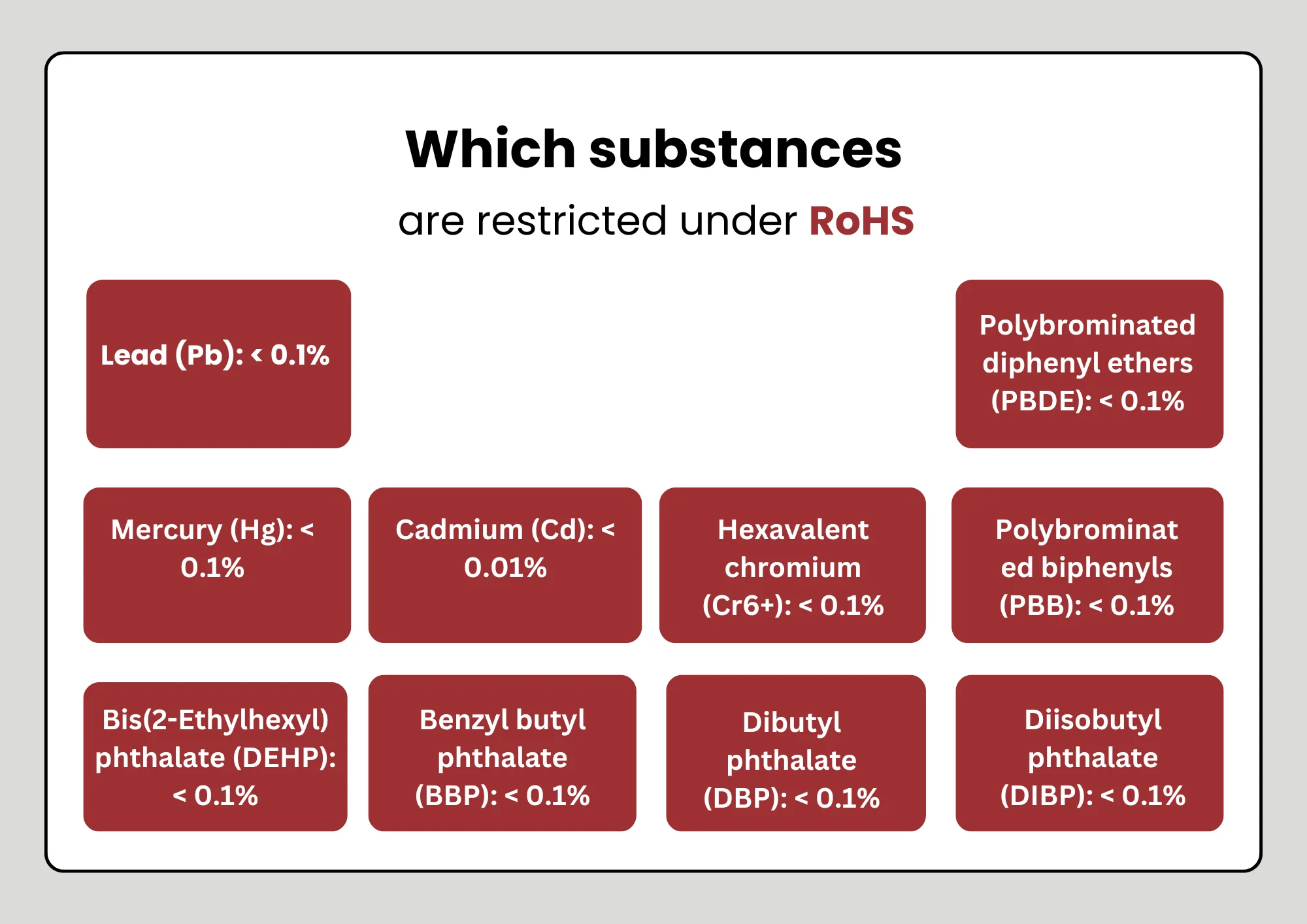
What is RoHS in Electronics?
RoHS is a mandatory standard legislated by the European Union. Its fULl name is the "Restriction of Hazardous Substances in Electrical and Electronic Equipment Directive." The directive aims to limit the use of hazardous substances in the manufacturing of various electronic and electrical products to protect the environment and public health.
The scope of RoHS applies to products such as large household appliances, small household appliances, IT and communication equipment, consumer electronics, lighting equipment, electronic and electrical tools, toys, leisure and sports equipment, medical devices, video control equipment, and more. Many of these products come with detailed user manuals, so many manufacturers and brands require strict compliance with RoHS regulations in the paper production processes and raw materials used for the manuals.

Harmful Substances Restricted by RoHS Directive
1. Lead (Pb)
- Limit: 0.1% (1000ppm)
- High-Risk Materials: Oil additives, packaging parts, plastic stabilizers and curing agents, dyes, pigments, solder, electronic ceraMICs, glass components, battery materials, etc.
2. Cadmium (Cd)
- Limit: 0.01% (100ppm)
- High-Risk Materials: Batteries, photographic materials, surface treatment materials, solder, paint, dyes, electronic ceramics, glass components, plastic stabilizers, etc.
3. Mercury (Hg)
- Limit: 0.1% (1000ppm)
- High-Risk Materials: Batteries, lamps, preservatives, catalysts, pigments, electrodes, plastic products, etc.
4. Hexavalent Chromium (Cr VI)
- Limit: 0.1% (1000ppm)
- High-Risk Materials: Electroplating liquids, rust inhibitors, tanning agents, batteries, catalysts, preservatives, pigments, etc.
5. Polybromobiphenyls (PBBs)
- Limit: 0.1% (1000ppm)
- High-Risk Materials: Used as flame retardants in plastics.
6. Polybromodiphenyl Esters (PBDEs)
- Limit: 0.1% (1000ppm)
- High-Risk Materials: Used as flame retardants in plastics.
7. Phthalates (DIBP, DBP, BBP, DEHP)
- Limit: 0.1% (1000ppm)
- High-Risk Materials: Used as plasticizers in plastics.
ROHS Test Standards
IEC 62321
China JJR Test Lab offers ROHS certification testing services for electronic products. Feel free to contact us for more information.
Email:hello@jjrlab.com
Write your message here and send it to us
 Canadian Rug Flammability Testing
Canadian Rug Flammability Testing
 Toy Flammability Test Compliance Certification
Toy Flammability Test Compliance Certification
 ISO 17025 Accredited Test Laboratory
ISO 17025 Accredited Test Laboratory
 What is Amazon California Proposition 65?
What is Amazon California Proposition 65?
 New METI Registration Regulations in Japan
New METI Registration Regulations in Japan
 Attention for Amazon Japan Sellers: New PSE Regula
Attention for Amazon Japan Sellers: New PSE Regula
 Compliance with Japanese Representative & METI
Compliance with Japanese Representative & METI
 ZigBee-LoRa-Z-Wave Product compliance testing
ZigBee-LoRa-Z-Wave Product compliance testing
Leave us a message
24-hour online customer service at any time to respond, so that you worry!




